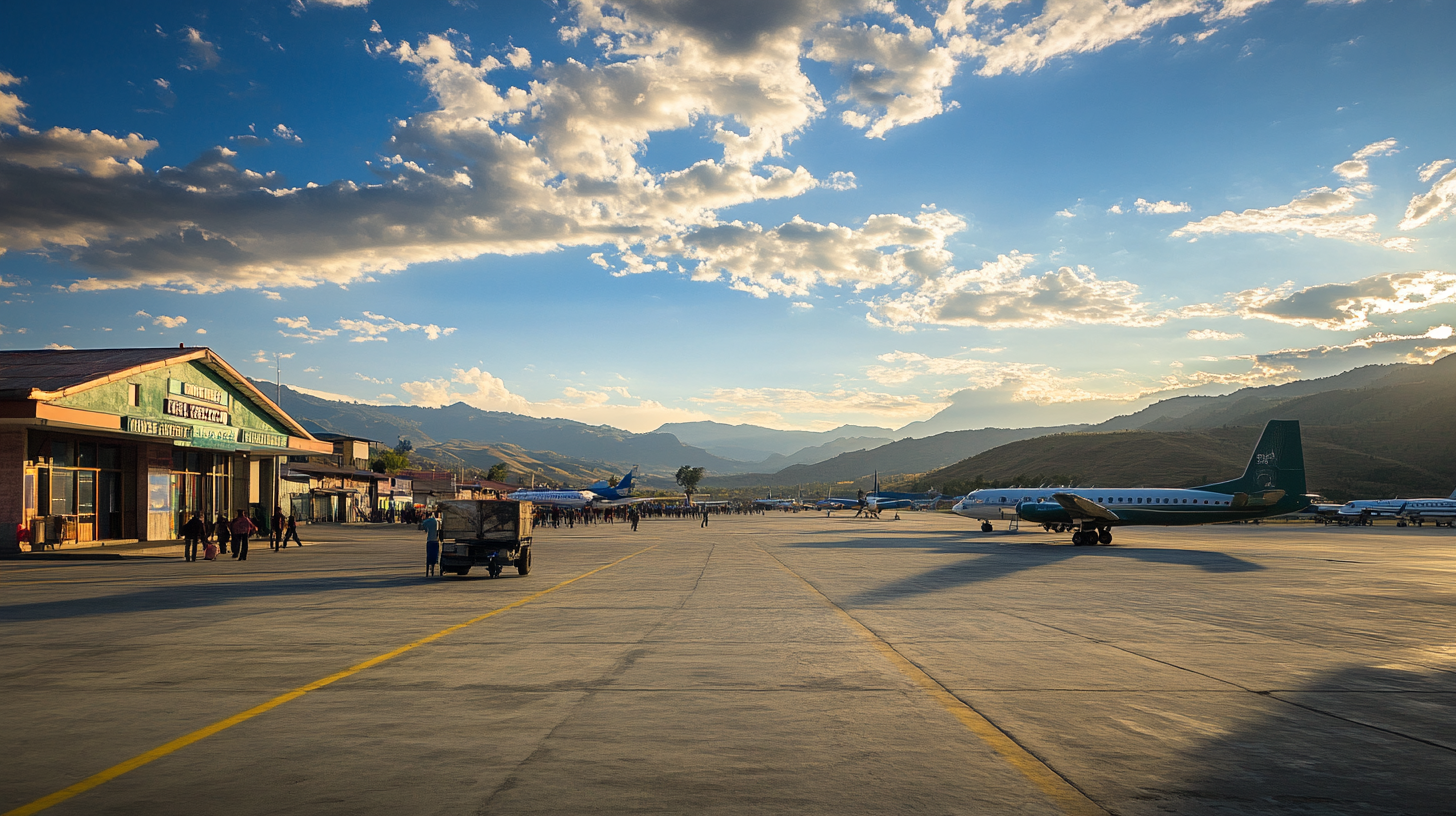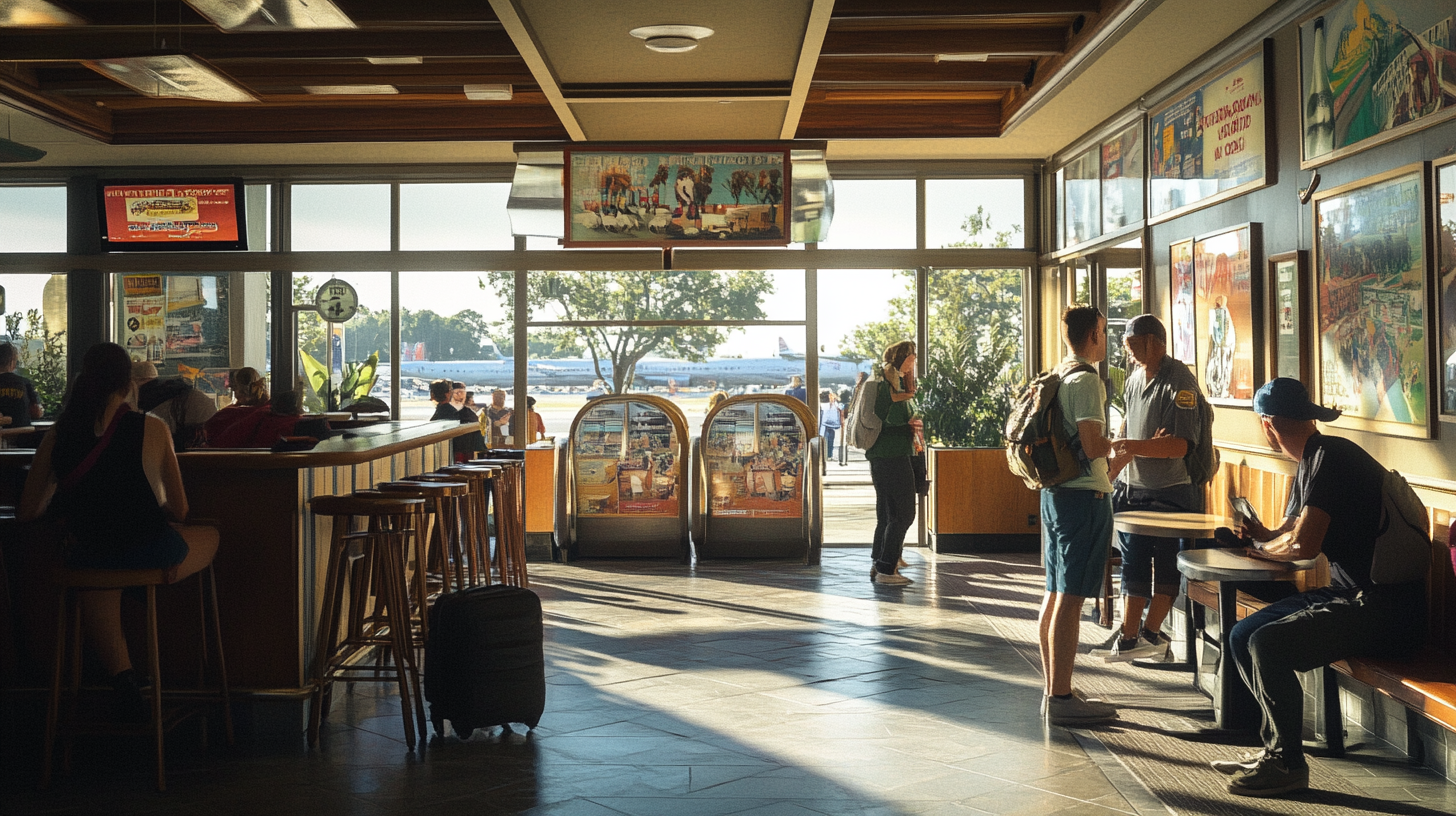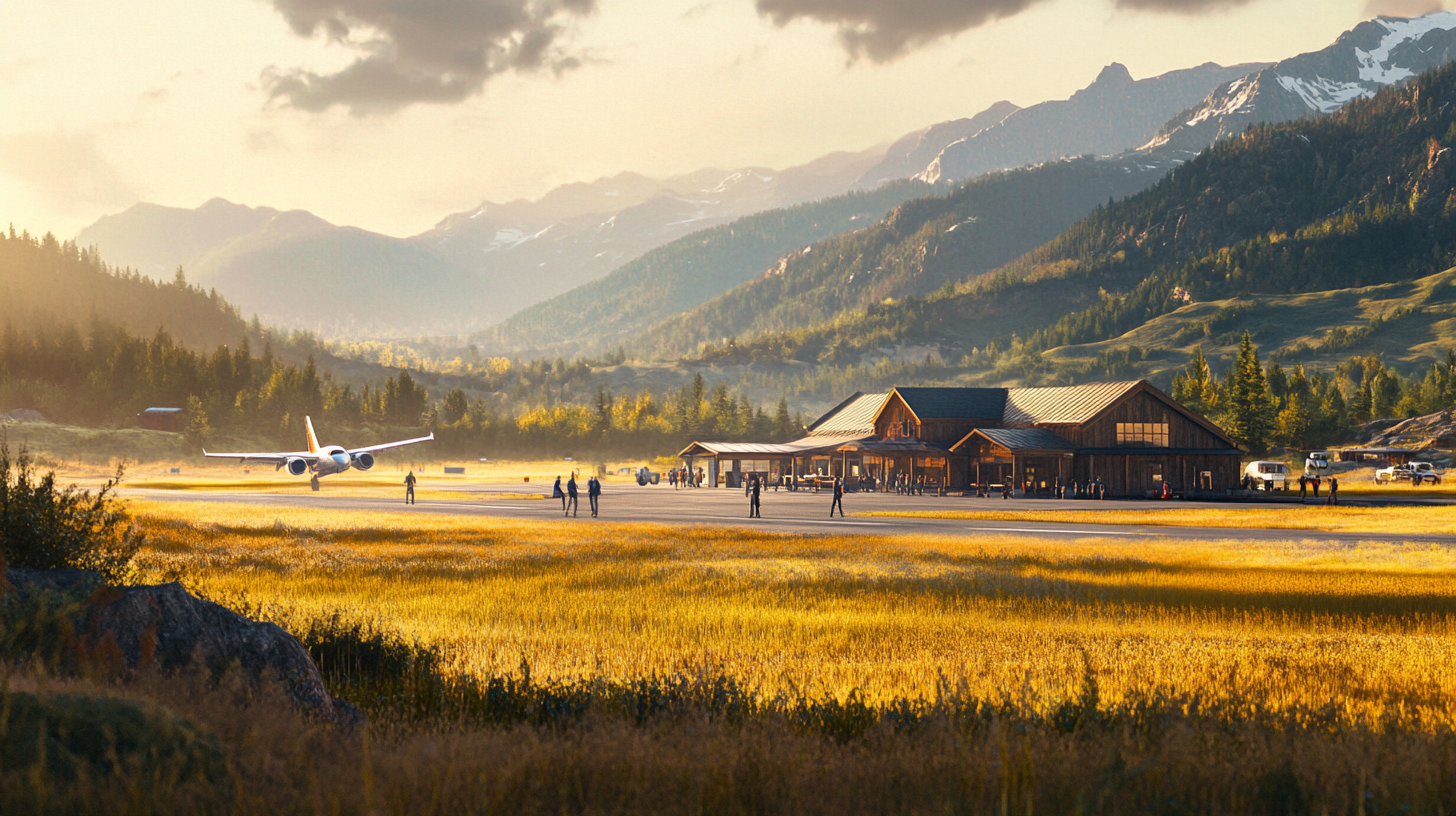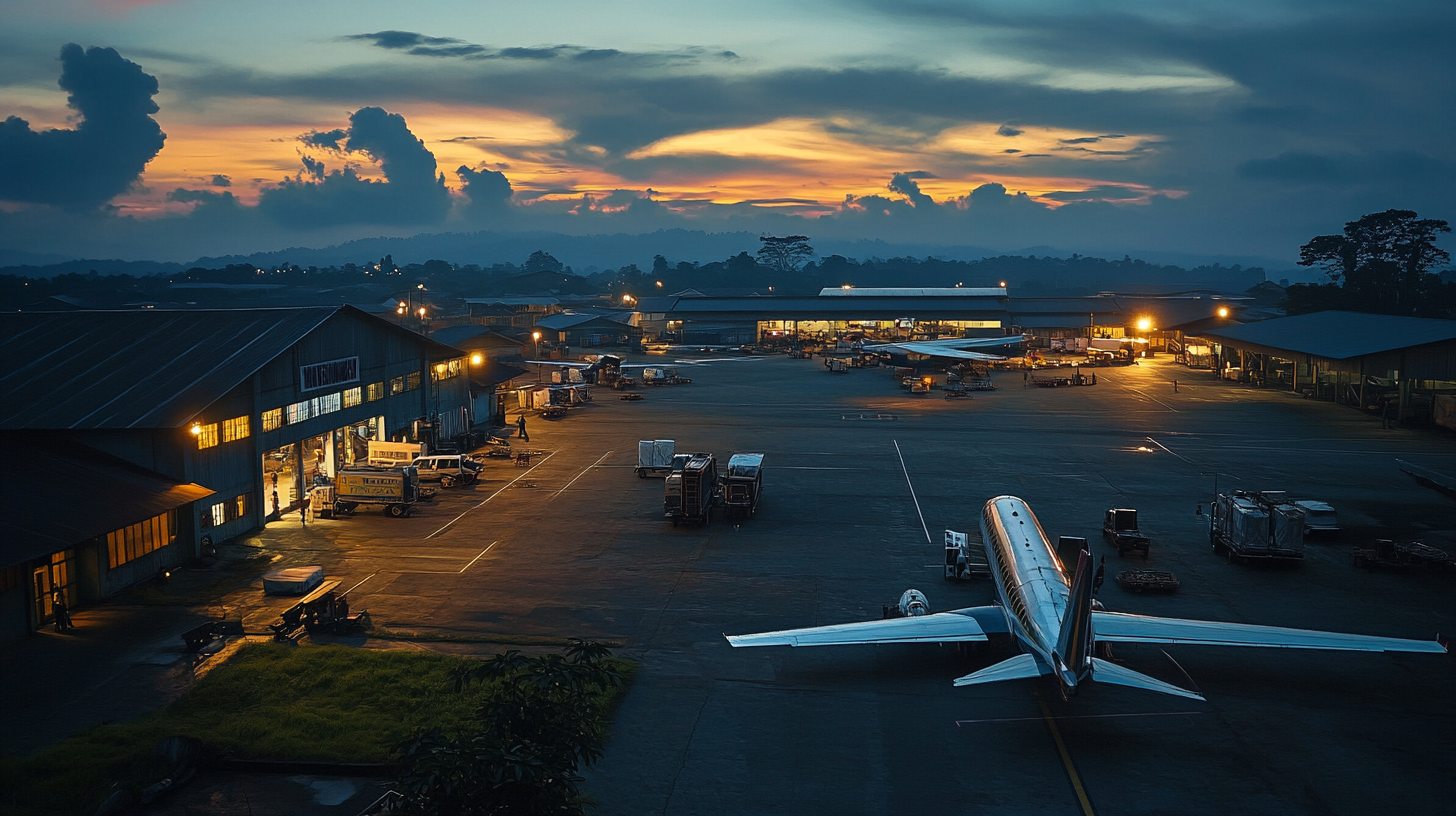The Charm of Small Airports: Hidden Gems of Air Travel

In our fast-paced world, dominated by bustling international hubs and crowded terminals, the air travel experience can often feel impersonal and exhausting. Long security lines, hurried meals at generic eateries, and the constant rush to the next gate have become synonymous with flying. Yet, nestled across the globe are small airports that offer a different kind of journey—one that embraces serenity, community, and unique charm. These are the places where a friendly smile greets you at check-in, where local art adorns the walls, and where the pace slows enough to breathe. As preferences shift towards unconventional journeys, these lesser-known terminals are redefining the aviation landscape, a trend explored in The Evolution of Air Travel Preferences Towards Smaller Airports .
The Appeal of Small Airports

Nearly 30% of global air traffic now flows through small airports, with around 40% of travelers choosing these alternative terminals. Their reasons are compelling: increased satisfaction, personal service, and shorter wait times. For instance, travelers often recount the ease of arriving just an hour before departure, breezing through security, and even having time to enjoy a locally brewed coffee in a cozy café. The intimate atmosphere of small airports fosters a community vibe, where staff remember frequent flyers by name, and fellow travelers exchange friendly nods. This transforms the travel experience into something more than a means to an end; it becomes an integral part of the journey, enriching it with human connections and regional flavors.
Airlines are taking notice, capitalizing on these trends with more regional flights and routes using smaller aircraft. This shift is reshaping the industry’s landscape, bringing about a renaissance of air travel that values quality over quantity. As highlighted in Airlines’ Shift Towards Regional Connectivity , carriers are investing in smaller jets and enhancing services at regional airports to meet the growing demand. This movement not only benefits travelers but also stimulates local economies, fostering growth and development in areas previously considered off the beaten path.
Unique Experiences at Small U.S. Airports

Across the United States, small airports offer a serene and efficient experience, each with its own local flavor:
- Savannah/Hilton Head International Airport epitomizes Southern charm, welcoming visitors with warm hospitality and easy access to historic Savannah and the idyllic beaches of Hilton Head. The airport’s art galleries showcase local artists, and live music performances often greet passengers, immersing them in the region’s rich culture from the moment they land.
- Portland International Jetport in Maine blends seamless operations with the state’s natural beauty, serving as a gateway to picturesque coastlines and maritime adventures. Friendly staff provide personalized recommendations for exploring lighthouses and indulging in fresh lobster rolls, enhancing the traveler’s experience. Exploring Maine’s Coastal Treasures Starting at Portland Jetport
- Palm Springs International Airport brings desert luxury to life with its open-air design, allowing travelers to bask in the sunshine and palm trees even before they step outside. The airport’s lush gardens and outdoor waiting areas offer a resort-like ambiance, making layovers feel like a mini-vacation.
- Bozeman Yellowstone International Airport offers breathtaking Rocky Mountain views, providing a stunning prelude to the natural wonders of Yellowstone National Park. Wooden beams and stone fireplaces in the terminal evoke a rustic lodge feel, setting the tone for adventure. Gateway to Yellowstone: Experiences at Bozeman Airport
- Charleston International Airport combines renowned Southern hospitality with cultural access, making arrivals and departures as charming as the city itself. Local boutiques within the terminal offer handcrafted goods and low-country cuisine, allowing travelers to savor regional specialties without leaving the airport.
- Santa Barbara Airport captures coastal beauty with its Spanish-style architecture and proximity to the Pacific Ocean, enhancing the travel experience with a touch of elegance. The terminal itself is a registered historical landmark, featuring art installations that reflect the area’s artistic heritage.
- Burlington International Airport in Vermont is a haven for outdoor enthusiasts, offering easy access to skiing, hiking, and the tranquil beauty of New England. The airport supports sustainable practices, aligning with the community’s commitment to environmental stewardship. Eco-Friendly Initiatives at Burlington International Airport
- Rogue Valley International-Medford Airport in Oregon surrounds travelers with stunning landscapes, serving as a portal to the Pacific Northwest’s natural splendor. Vineyards and wineries nearby make it an ideal starting point for oenophiles exploring Oregon’s wine country.
These hidden gems ensure a stress-free, memorable journey, turning routine travel into an enjoyable adventure. By offering not just a transit point but a taste of local culture and hospitality, these airports enhance the overall travel experience, making Discovering America Through Its Small Airports a worthwhile endeavor for any traveler seeking something beyond the ordinary.
Architecture Reflecting Local Culture

Many small airports are more than just transit points; they are reflections of their communities’ heritage and environment. Airports like Bozeman Yellowstone, Nantucket Memorial, and Santa Barbara feature creative designs and cozy ambiances that capture the essence of their destinations.
- Bozeman Yellowstone showcases vaulted ceilings and natural materials, echoing the grandeur of the surrounding mountains. The use of timber and stone within the terminal creates a rustic, lodge-like atmosphere, preparing travelers for the wilderness adventures that await. Local art displays depict wildlife and landscapes, immersing visitors in Montana’s natural beauty.
- Nantucket Memorial Airport incorporates local architectural styles, providing a quaint and welcoming atmosphere that mirrors the island’s charm. The shingled exteriors and nautical-themed interiors evoke the seaside village feel, and the intimate setting makes arrivals and departures feel like a homecoming. The Coastal Charm of Nantucket Memorial Airport
- Santa Barbara Airport‘s Spanish Colonial Revival style offers travelers a glimpse into the region’s history and aesthetic. With its red-tile roofs, wrought-iron details, and colorful tiles, the airport is a miniature version of the city’s architectural heritage. Even the landscaping, featuring native plants and flowers, contributes to an authentic sense of place.
These architectural nuances create a more relaxed and picturesque travel experience, setting them apart from larger, busier airports. Passengers find themselves immersed in the local culture from the moment they step off the plane, turning travel into a seamless continuation of their journey into the heart of the destination.
Operational Quirks and Unique Features

Around the world, small airports enhance travel with extraordinary experiences due to their unique operational quirks:
- Lukla Airport in the Himalayas is renowned for its short, challenging runway nestled between mountains, serving as the gateway to Mount Everest. Adventurous travelers share tales of thrilling landings on the 527-meter runway, surrounded by towering peaks—a true prelude to the adventures ahead. Experiencing the Thrills of Lukla Airport
- In the Caribbean, Princess Juliana International Airport provides the thrill of low-flying planes over Maho Beach, creating a spectacle for beachgoers and aviation enthusiasts alike. The aircraft pass just meters above sunbathers, offering stunning photo opportunities and an adrenaline rush for those below.
- Courchevel Altiport in the French Alps offers a mountainous location with a sloped runway, making landings and takeoffs a dramatic affair. Only specially certified pilots can navigate the 18.5% gradient, providing passengers with unparalleled views of snow-capped peaks during their ascent and descent.
- Gibraltar International Airport sees its runway intersecting with a major road, requiring both air and road traffic to be carefully coordinated—a rare sight in aviation. Traffic lights stop cars when planes are landing or taking off, creating a unique intersection between daily life and air travel.
- Barra Airport in Scotland operates using beach runways, where flight schedules are dictated by the tides, providing a one-of-a-kind experience. Landing on the shell-strewn sands, passengers experience the raw beauty of the Outer Hebrides in a way no other airport can offer.
- Juancho E. Yrausquin Airport on Saba Island boasts one of the world’s shortest commercial runways, challenging pilots and adding excitement for passengers. At just 400 meters long, the runway is flanked by cliffs and the sea, making every landing and takeoff a memorable event.
These airports not only connect remote communities but also enrich travel with unforgettable moments. They turn the act of flying into an adventure in itself, creating stories that passengers share for years to come.
Benefits of Embracing Small Airports

Choosing to fly through smaller regional airports offers numerous advantages that enhance the overall travel experience:
- Efficiency and Convenience: Shorter lines and less congestion mean reduced wait times for check-in, security, and boarding. Travelers can move through airports with ease, minimizing stress. This efficiency often allows more time to enjoy airport amenities or arrive closer to departure times, adding flexibility to travel plans.
- Cost Savings: Lower operational costs at smaller airports often lead to competitive fares. Additional perks like free or affordable parking contribute to overall savings. Some regional airports even offer complimentary services such as Wi-Fi and baggage carts, enhancing value for travelers.
- Unique Destinations: Small airports frequently provide unique routes to destinations not served by larger hubs, opening up opportunities for unexpected adventures. This access supports tourism in lesser-known areas, allowing travelers to discover hidden gems and authentic experiences off the typical tourist trail.
- Personalized Service: With fewer passengers, staff can offer more attentive, friendly service, contributing to a pleasant atmosphere. From ground crew to flight attendants, the emphasis on personal connection can make travelers feel valued and cared for.
Studies show that smaller airports have higher satisfaction ratings and reduced flight delays. They turn routine journeys into personalized adventures, offering unique shops, eateries, and local touches that reflect the surrounding community. Travelers might find themselves sampling regional delicacies, browsing local crafts, or even engaging with community events hosted within the airport, as highlighted in Enhancing Travel Experiences at Regional Airports .
Awards and Recognition

Recognition for outstanding service and experience at small airports is growing. USA TODAY 10Best’s 2024 “Best Small Airport” list highlights ten U.S. airports that excel in providing less congestion, better commercial flights, and ample amenities. Notable mentions include:
- Piedmont Triad International Airport in North Carolina, known for its ease of navigation and rental options. The airport’s commitment to customer satisfaction is evident in its modern facilities and friendly staff.
- Manchester-Boston Regional Airport in New Hampshire, which exudes New England charm and convenience. Its strategic location and efficient services make it a preferred choice for travelers in the region.
These accolades underscore the value and appeal of choosing small airports for travel. As more travelers share their positive experiences, the recognition of these airports continues to grow, encouraging others to explore the advantages they offer. The Impact of Awards on Small Airport Popularity
Access to Remote and Picturesque Locations

Small airports are crucial gateways to some of the world’s most remote and breathtaking destinations:
- Lukla Airport in Nepal serves as the starting point for treks into the Himalayas, including expeditions to Mount Everest. The airport’s strategic location makes it indispensable for mountaineers and trekkers seeking to explore the highest peaks on earth.
- Kangerlussuaq Airport in Greenland provides access to stunning fjords, glaciers, and the Arctic wilderness. Adventurers and researchers alike rely on this airport to reach one of the most pristine environments on the planet. Arctic Expeditions Starting at Kangerlussuaq Airport
- El Tepual Airport in Chile connects travelers to the Patagonian wilderness, offering unparalleled natural beauty and adventure. The airport serves as a portal to the fjords, mountains, and glaciers that define this remote region.
These airports are lifelines for remote communities and adventurers seeking off-the-beaten-path experiences. They enable sustainable tourism and provide essential connectivity that supports local economies and preserves cultural heritage.
Final Thoughts

In an era where the journey is just as important as the destination, small airports offer a refreshing alternative to the hustle and bustle of major hubs. They embody the essence of personalized travel, where every aspect of the journey is thoughtfully curated to enhance passenger experience. From the moment you arrive, the sense of community and connection is palpable, turning what might have been a stressful transit into a pleasurable part of your adventure.
They provide efficiency, personalized service, and unique experiences that enrich travel in ways large airports often cannot match. Whether it’s the architectural charm, the operational quirks, or the access to hidden locales, these hidden gems of air travel are worth exploring. As highlighted in The Benefits of Traveling Through Small Airports , choosing these destinations can transform your entire journey.
Follow us back to Seat 5A for more insights and stories about the world of travel. Next time you plan a trip, consider the charm of small airports—you may find that the journey becomes the highlight of your adventure.






